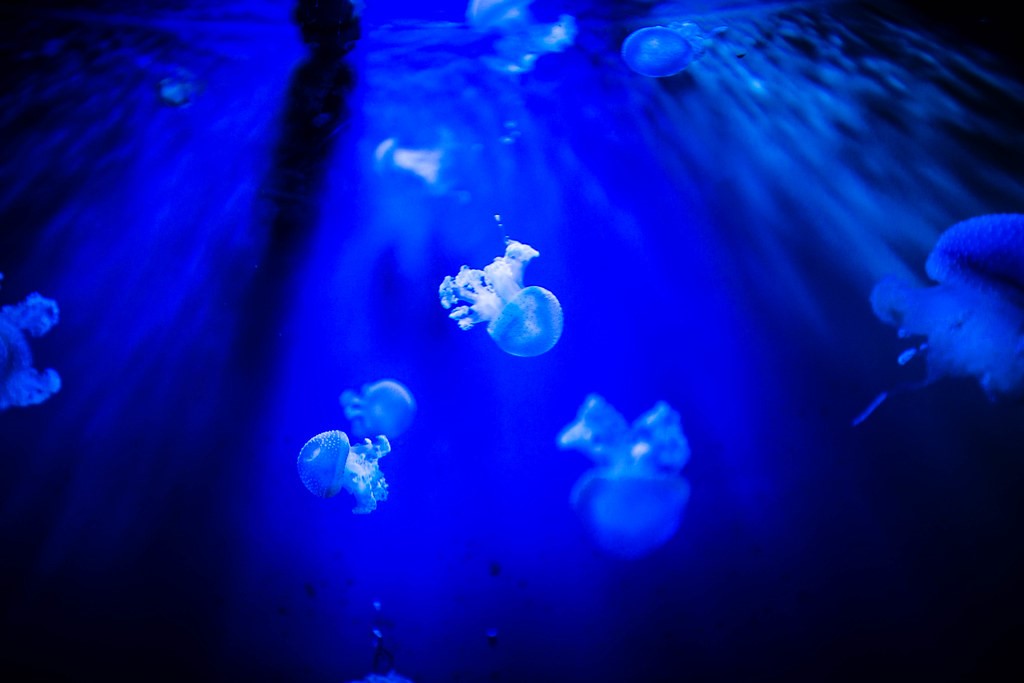GELATINE
People involved
Gelatinous plankton indicators for ecological status assessment
A component long ignored in planktonic ecology research, gelatinous zooplankton includes organisms (i.e., jellyfish, siphonophores, ctenaria, pelagic tunicates) capable of surviving and proliferating in highly variable environmental conditions, and of rapidly exploiting available resources. These organisms will contribute to problematic mass proliferation events in coastal waters, especially since the 1980s, as they interfere with many human activities. Jellyfish blooms can clog fishing nets, kill fish in aquaculture pens, clog pumping systems in coastal industrial facilities, and cause health problems for swimmers leading to regular beach closures and severe economic hardship in some coastal areas. The proliferation of gelatinous zooplankton in the environment also impacts the food web: the high ingestion capacity of gelatinous organisms and their food preference for planktonic crustaceans make them direct trophic competitors of small zooplankton-eating pelagic fish. A better understanding of the population dynamics of gelatinous zooplankton in the French marine sub-regions is therefore essential for the implementation of management measures to prevent or mitigate their impacts.
The GELATINE project has several objectives:
Objective 1. To analyse data on gelatinous zooplankton acquired along the French coastline by trawl hauls. To establish a state of the art on the dynamics of gelatinous species (ecology, distribution, variability). This work will lead to an analysis of the spatio-temporal variability of gelatinous plankton communities (taxonomy, size spectrum) and associated hydrological and biological data (phytoplankton, mesozooplankton) in different marine sub-regions on a seasonal and interannual scale.
Objective 2. To propose methods for the production of quantitative data on the abundance of gelatinous plankton and to validate their relevance for the calculation of OSPAR indicators of Good Ecological Status.
Objective 3. To propose and test one or more indicators specific to gelatinous plankton, adapted to the data acquired during the optimised MSFD fishing surveys.
The actions of this project will make it possible to orientate the long-term monitoring strategy for planktonic components, in particular gelatinous plankton, and thus contribute to the implementation - by France - of the monitoring obligations provided for in the Marine Strategy Framework Directive.
Funding: Office Français de la Biodiversité (OFB)
Project coordinator:
- Elvire ANTAJAN (Ifremer, Laboratoire Environnement Ressources d’Arcachon)
- Eric GOBERVILLE (Sorbonne Université-BOREA)
- Sandrine VAZ (Ifremer, Laboratoire Halieutique Méditerranée)
- Dorothée VINCENT (Office Français de la Biodiversité)
BOREA contact: Eric GOBERVILLE
- Office Français de la Biodiversité
- Ifremer

